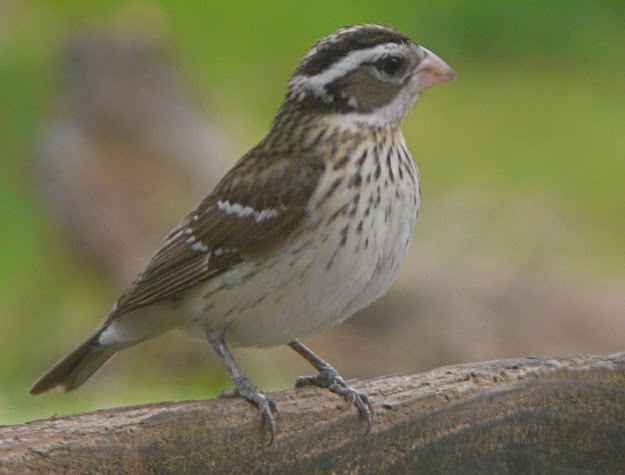Every birder we know remembers his or her first experience with the scope and sheer size of migration. We can read that between three and four billion birds fly over the U.S. every spring and summer, but it takes a particular incident to bring that statistic to life. For many, it’s the huge flocks of Snow Geese in Addison VT. For others, it’s hawk watches on Mt. Philo or Putney Mountain or – even more amazing – someplace like Veracruz where tens of thousands of raptors pass overhead in just a few days. And for others, it’s a “fallout”, when hungry and exhausted birds hit a wall of wind or a storm and tumble out of the skies en masse, landing on ship railings, lawns, trees, houses and cars.
This fall, our own backyard has given us a hint of migration wonders. On August 31, we strolled outdoors for our morning “hello” to the gardens, and we immediately realized that this was no ordinary day. There was bird noise everywhere!
We ran inside to get binoculars and a camera, and we spent the next two hours so excited that we didn’t even complain too much about the dreaded “warbler neck” from staring up into the trees.
The most exciting – and initially baffling – bird was a male Scarlet Tanager, the first we’ve ever seen in our yard.
He appeared to be molting and was a colorful mishmash of red, black, yellow and orange instead of a tanager's usual rich red body and jet black sides.
(Except for the photos of this bird, all the others in this post were taken earlier. We were too stunned to get a lot of photos!)
There were nine species of warblers, including the Common Yellowthroats that nested and fledged young in the wet part of the yard.
That morning, we identified twenty-seven species of birds. Some (like Mourning Doves, Downy and Hairy Woodpeckers, chickadees and titmice) were year-round residents. Most, though, were southward-bound migrants.
Migratory birds need a lot of food! Many birds that nested and raised young here in Vermont spend our winters in South or Central America. Some fly out over the ocean, nonstop, for an entire day or more. They spend weeks fattening up before starting out on their journeys, and they love both sugary fruits and protein-rich caterpillars.
The birds in our yard were active in two tall wild cherry trees, two old apple trees (apple trees are great for yummy caterpillars) and plum trees, and a big oak. (One oak can support over 300 species of caterpillars!)














No comments:
Post a Comment